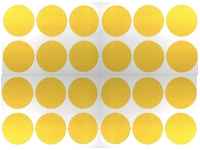|
Outline
This procedure covers the general guidelines for through hole component removal using a solder fountain system.
|
||||||||||||||||||||||||||||||||||||
|
Procedure
Solder Fountain System
Procedure - Circuit Board Preparation
Procedure - Circuit Board Pre-heat
Procedure - Removal Process
Portion of the video above is courtesy of Air-Vac Engineering Company |
||||||||||||||||||||||||||||||||||||
Images and Figures
Component Removal, Through Hole Components, Solder Fountain Method

Figure 1. Typical solder fountain system.
|
||||||||||||||||||||||||||||||||||||
8.1.2 Component Removal, Through Hole Components, Solder Fountain Method
Procedure covers removal of through hole components on circuit board assemblies using a solder fountain system.
Minimum Skill Level: Expert
Conformance Level: Medium
REQUEST FOR QUOTE GUIDES INDEX

Component Removal, Through Hole Components, Solder Fountain Method

Typical solder fountain system.

We're here to help with all your challenging circuit board and electronic component rework and repair needs.
LEARN MORE
SLIDESHOW STARTING
❮
❯










